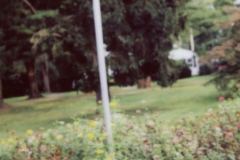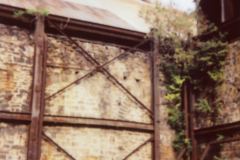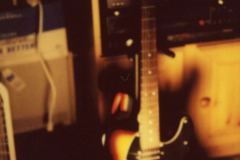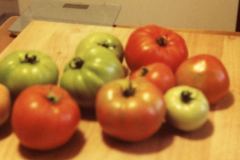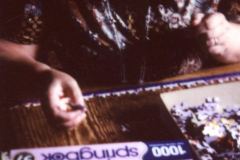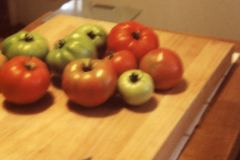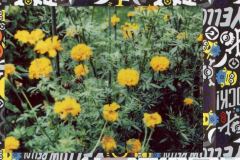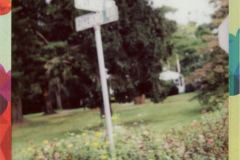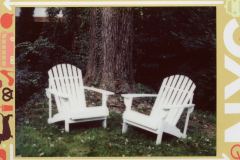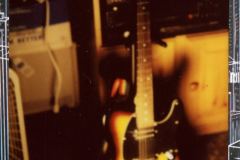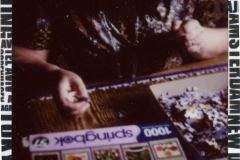It’s a pretty common tale – while cleaning out my parents’ house several years ago, I came across a funky old camera from many years ago. It was a folding camera; once I figured out how to open it, I realized it was thing of beauty.
But at that point, I wasn’t in much of an analogue headspace. I was focused on my digital work, building out my Nikon digital kit and experimenting with last years’ models of high end compacts (Panasonic LX-5, Canon S95, Olympus XZ-1). So this funky old camera was the subject of my photos, but wasn’t the one taking them.
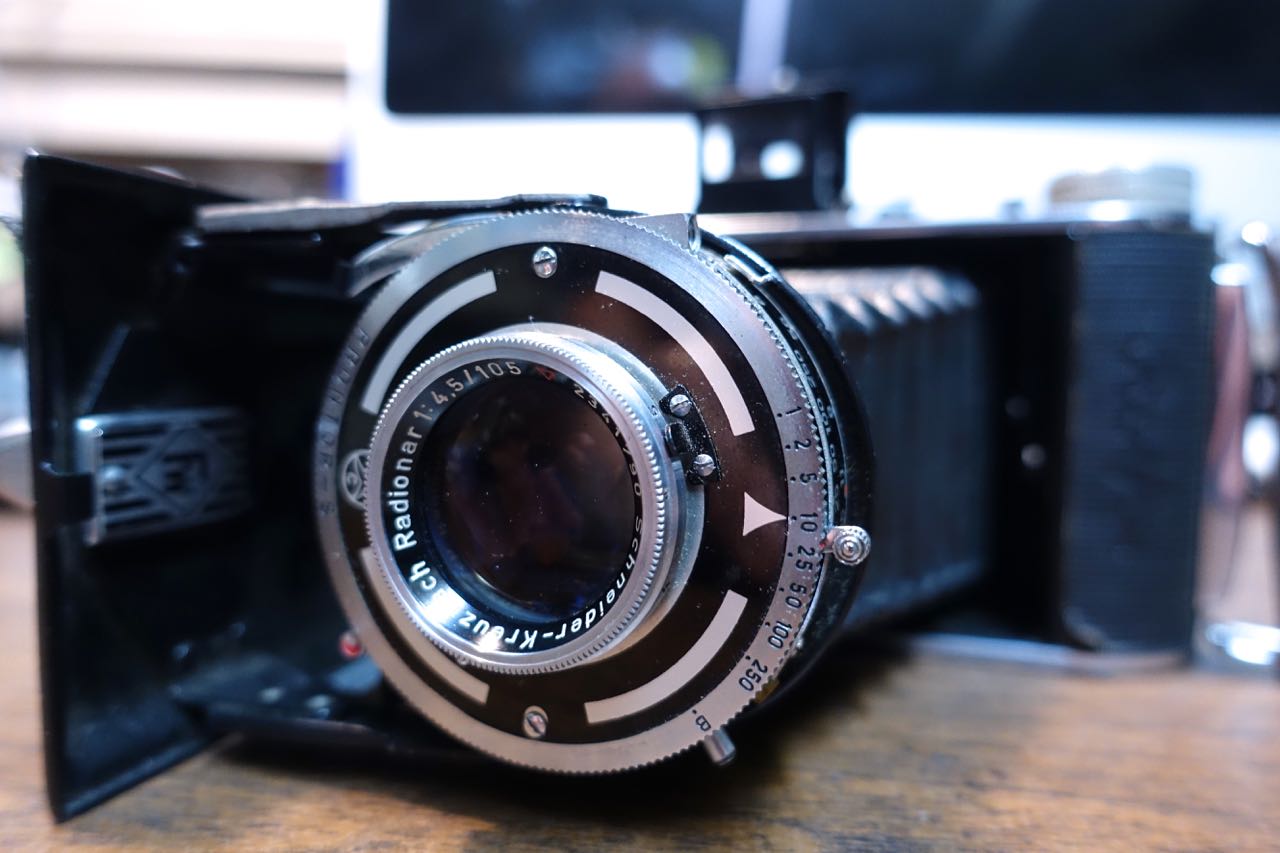
Then, last year, I decided to see if the old girl would still work. It’s a Franka Rolfix “Two-size” camera, completely manual, with a non-rangefinder viewfinder. It takes 120 film (which I had never shot and knew nothing about), shooting in 6×9 format. It also can be used as a 6×6 camera, but the mask that allows that was long gone. On the front is a 105mm f3.5, range-focusing lens, a Copal shutter capable of 1/250 of a second that seemed to work okay. A little more research pegged it to 1951; I still had the remains of the instruction manual and found a clean scan on Mike Butkus’ great orphancameras.com site.
While it will be the subject for another post, I had a ball trying it out. I loaded it with Ilford FP4 Plus (125), and using my trusty Canon S95 as a pocket meter, went out and did some shooting. Unbelievably (to me anyway) each shot was nicely exposed; one was way out of focus, but that was my issue. Here’s an example to illustrate that it still shoots (and shoots well!):
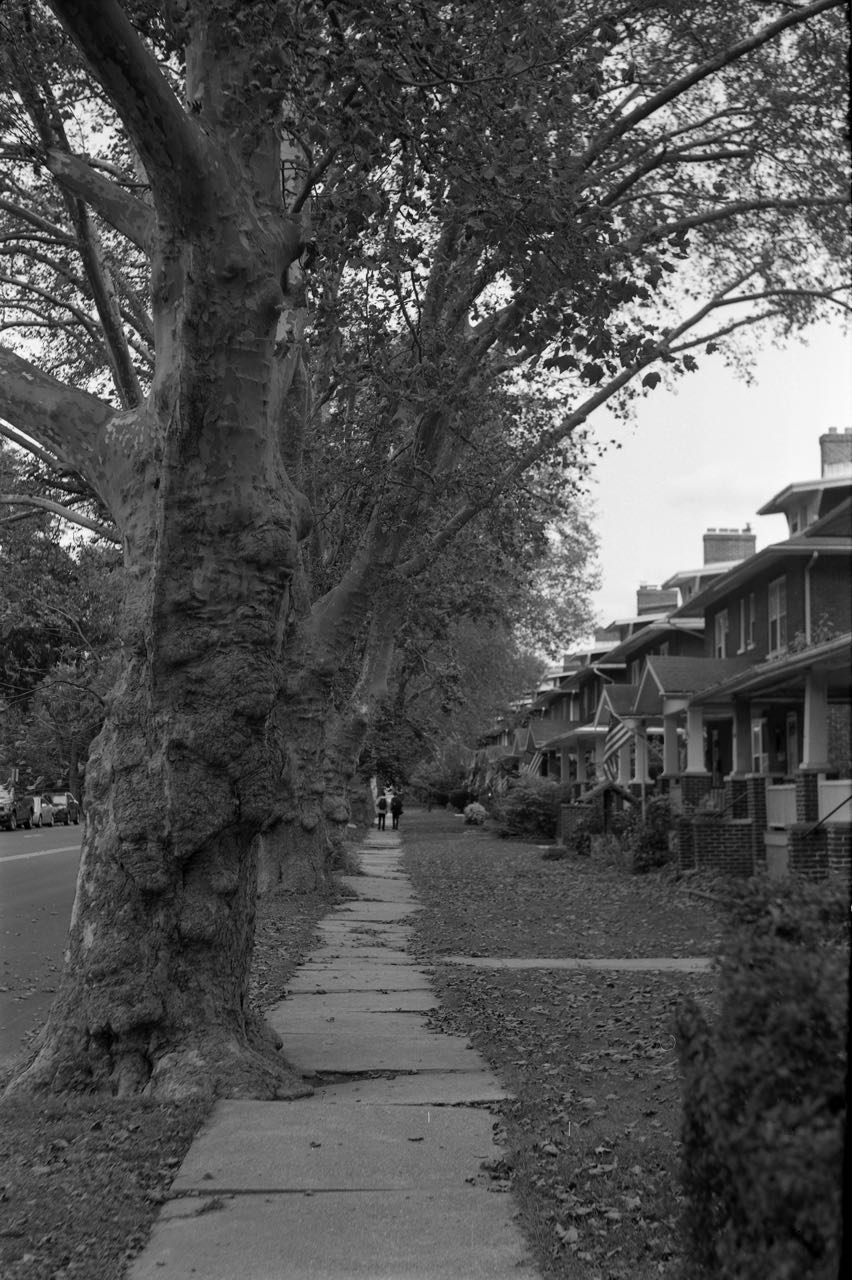
I never went beyond that first roll, for several months later, I acquired my Yashicamat 124G (more on that later, too). The Rolfix went back to decorating the shelf.
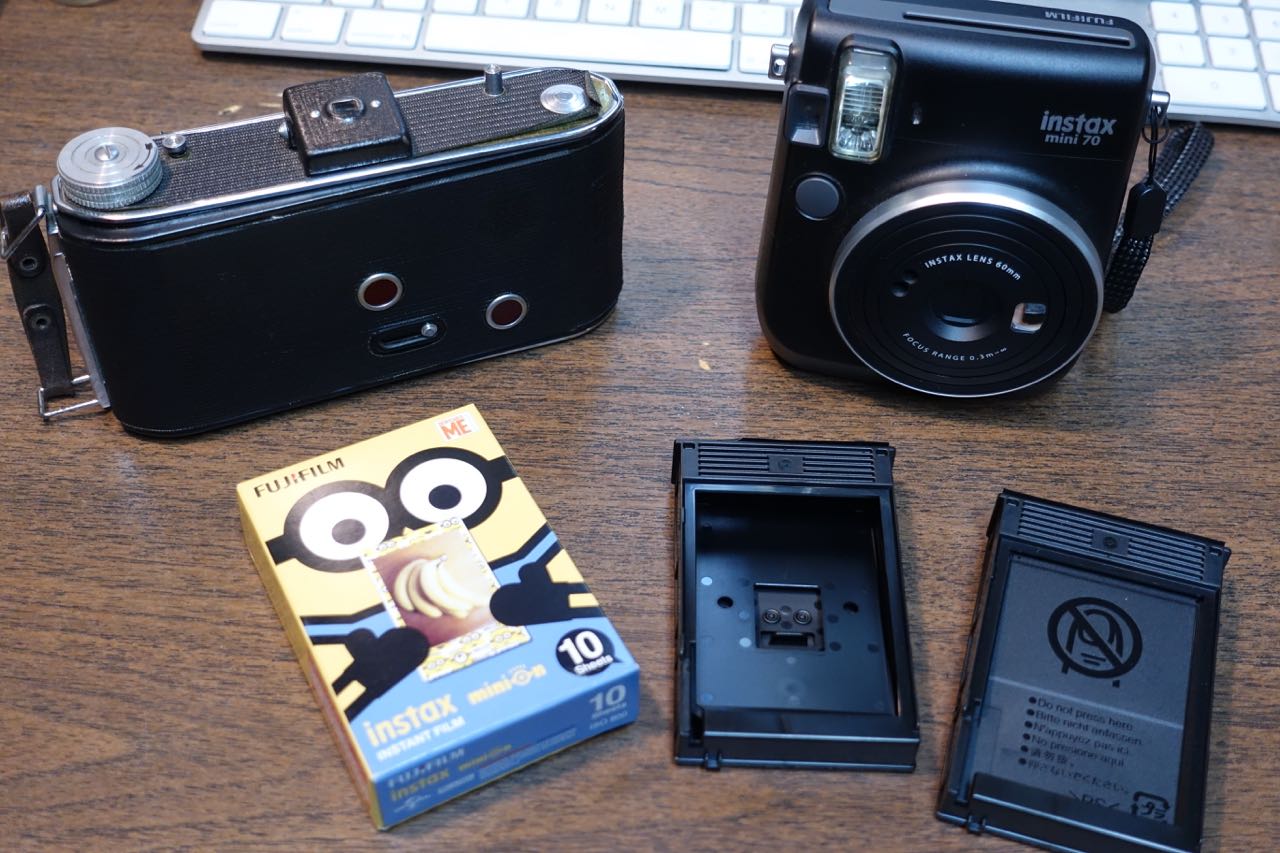
Mixing old and new
That’s the first part of the story. The second? The Fuji Instax mini 70. I had purchased it for my daughter’s wedding to use as a visual guestbook creator. It was a ton of fun to play with and did its job well. And while I find the Instax line an interesting format, I was frustrated with the mini 70’s lack of flash or exposure control. Fun for snaps, not so good for my more artistic side. I did pick up an Instax Share printer that make nice prints from cell phone pictures, which I think I enjoy more than the mini 70.
So here I was with a bunch of Instax mini film, along with some clearance stock I bought from B&H that had Minions all over it and several more packs I bought at my local camera shop’s annual yard sale.
And then it hit me – could there be a way to shoot Instax film in the old Rolfix? Instax film is about the same size as a 120 6×9 negative (although the chemical pods do take up part of the exposable area.) So here’s what I did…
IMPORTANT NOTE: all of the film handling you see here needs to happen in a changing bag; practice outside with old stuff first!
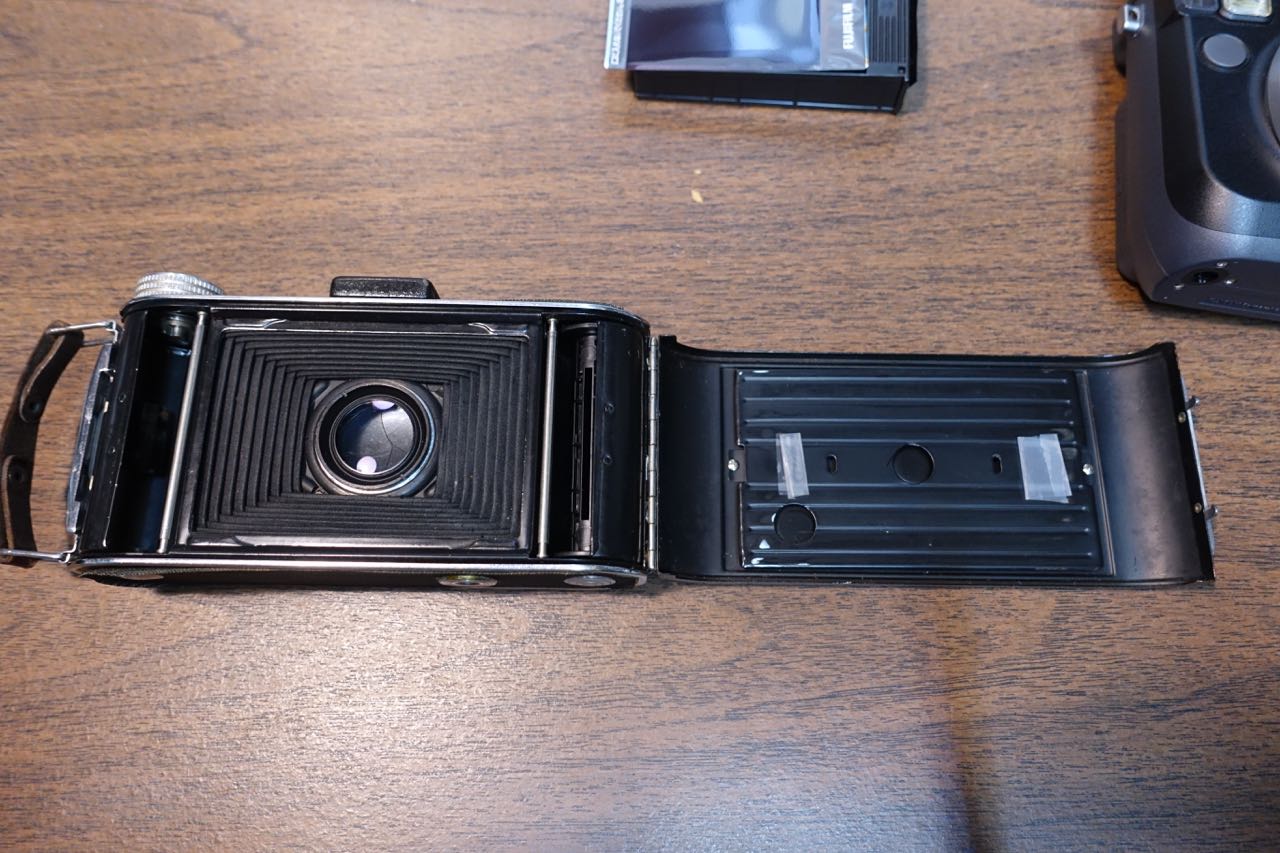
I opened the back of the Rolfix and placed two small pieces of tape on the pressure plate. I then packed the camera and a pack of Instax mini film into a changing bag and got to work.
I slid the darkslide off the front of the film pack, pulled out the first piece of film and returned the darkslide to the pack. I then mounted the piece of film with the printed side toward the pressure plate and the dark side toward the lens (the back of the film is the side that gets exposed). Closed up the back, pulled the camera out of the changing bag and was ready to shoot.

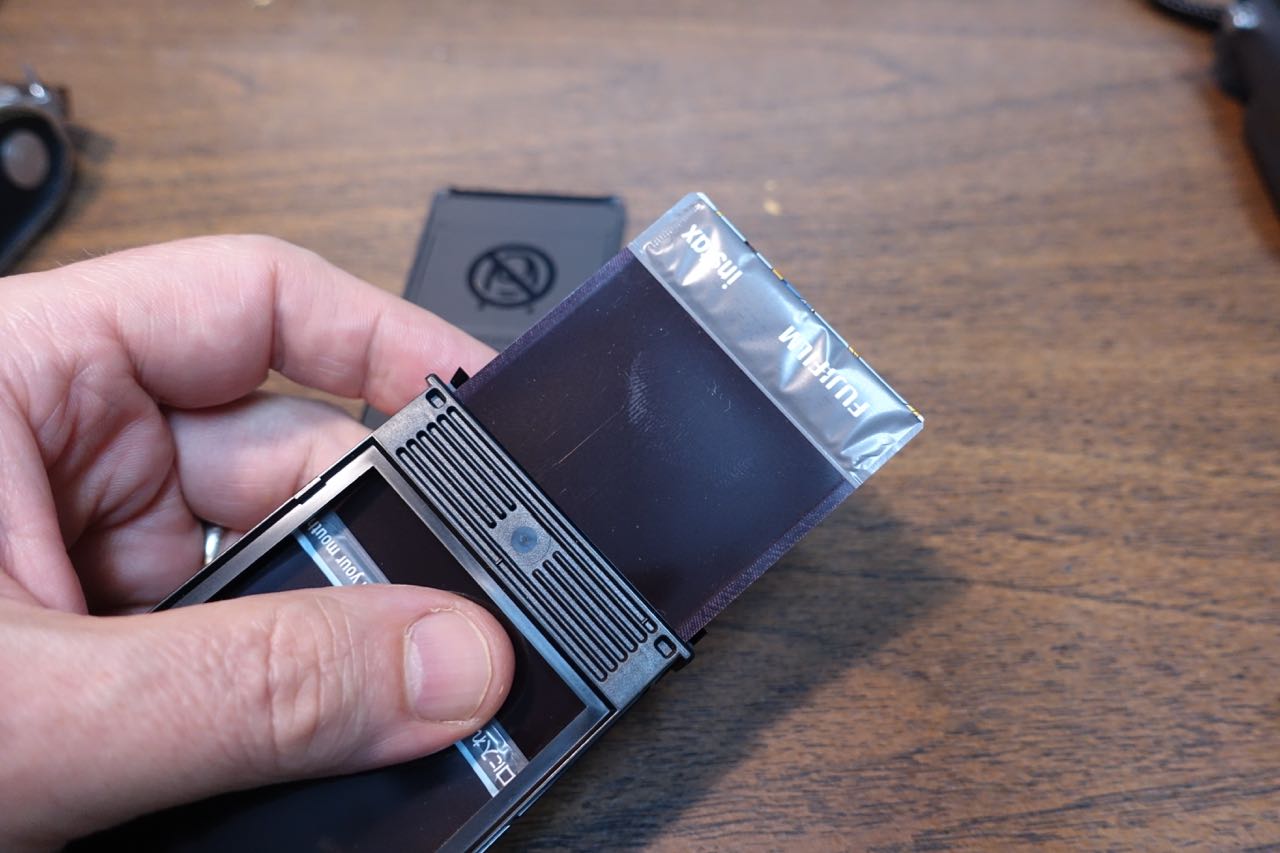
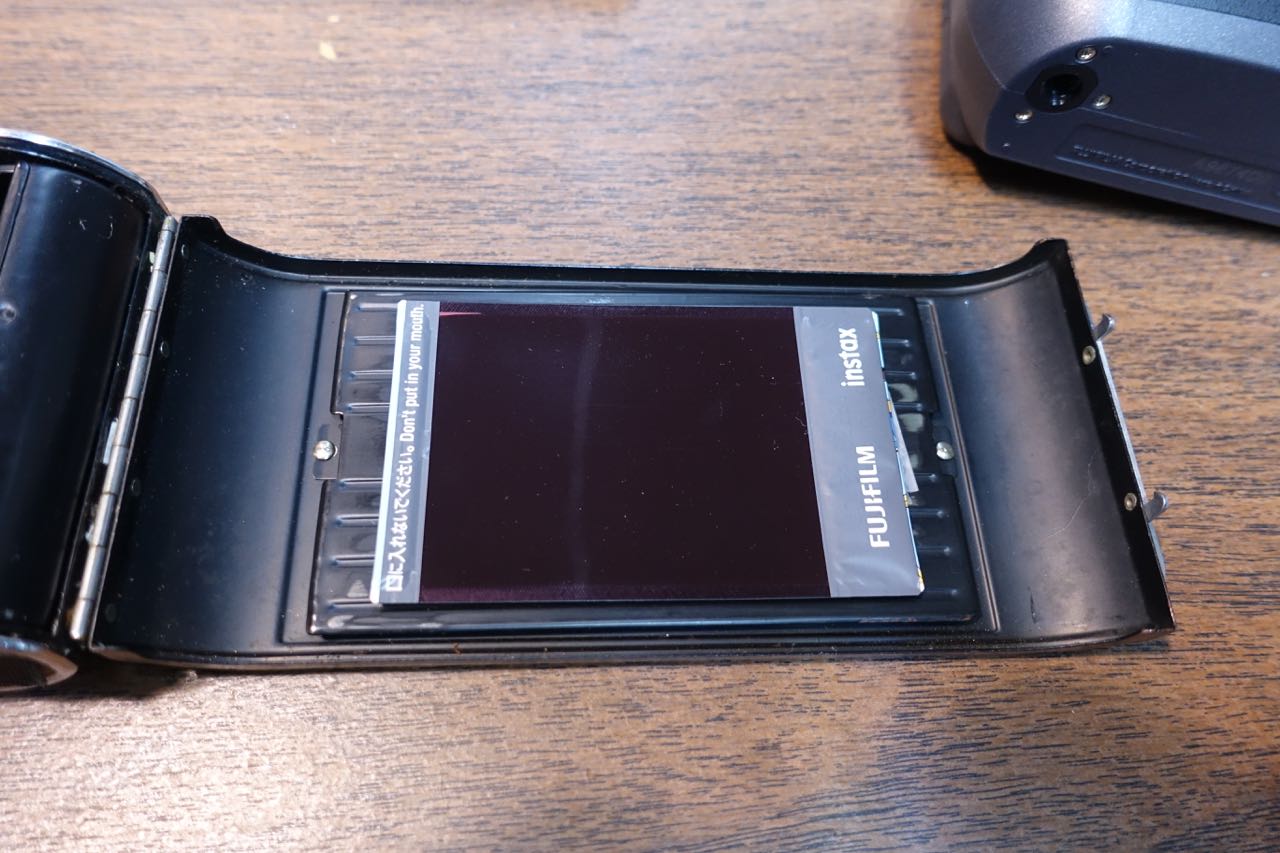
Instax film has an ISO of 800, making it pretty flexible. The lens of the Rolfix stops down to f32, so the shutter speed wouldn’t be a limitation unless it was REALLY bright. Since the Rolfix is all manual, I needed to set the aperture and shutter speed manually, with the help of the light meter app on my phone. Focus is also manual, so I need to guess the distance and set it on the lens.
Exposing the film was the easy part; getting it to develop, that’s another tale.
To make this happen, I needed a way to have the film go through a set of rollers. Like original Polaroid SX70 film, instax uses a pod of chemicals that gets spread over the film to trigger the development reaction. Those chemicals need to be spread pretty evenly. My solution? Run it through the mini 70 camera!
AGAIN, IMPORTANT NOTE: all of the film handling you see here needs to happen in a changing bag.
It was back to the changing bag, this time with an empty Instax cartridge, the mini 70 and the Rolfix. Once in the bag, I removed the film from the Rolfix, inserted it into the empty cartridge and loaded the cartridge into the Mini 70.
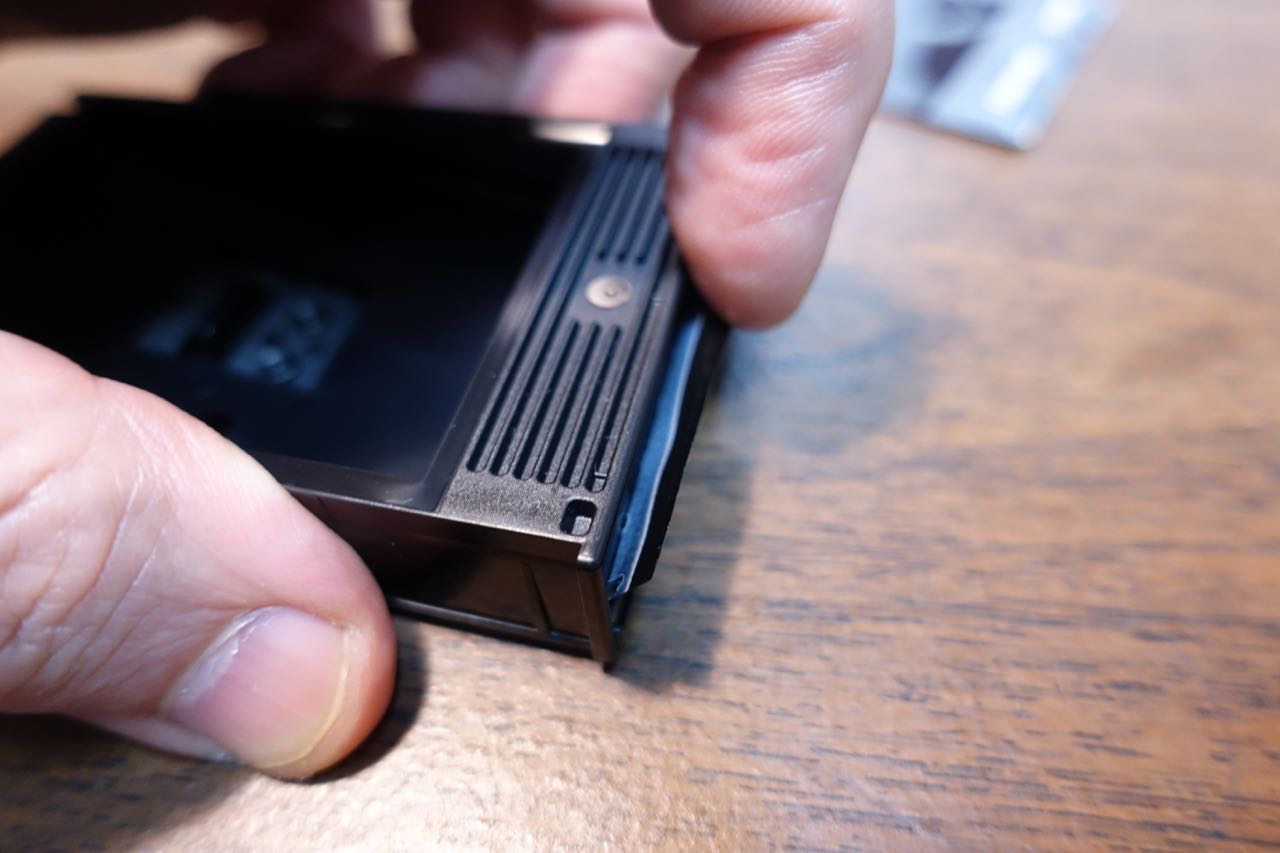
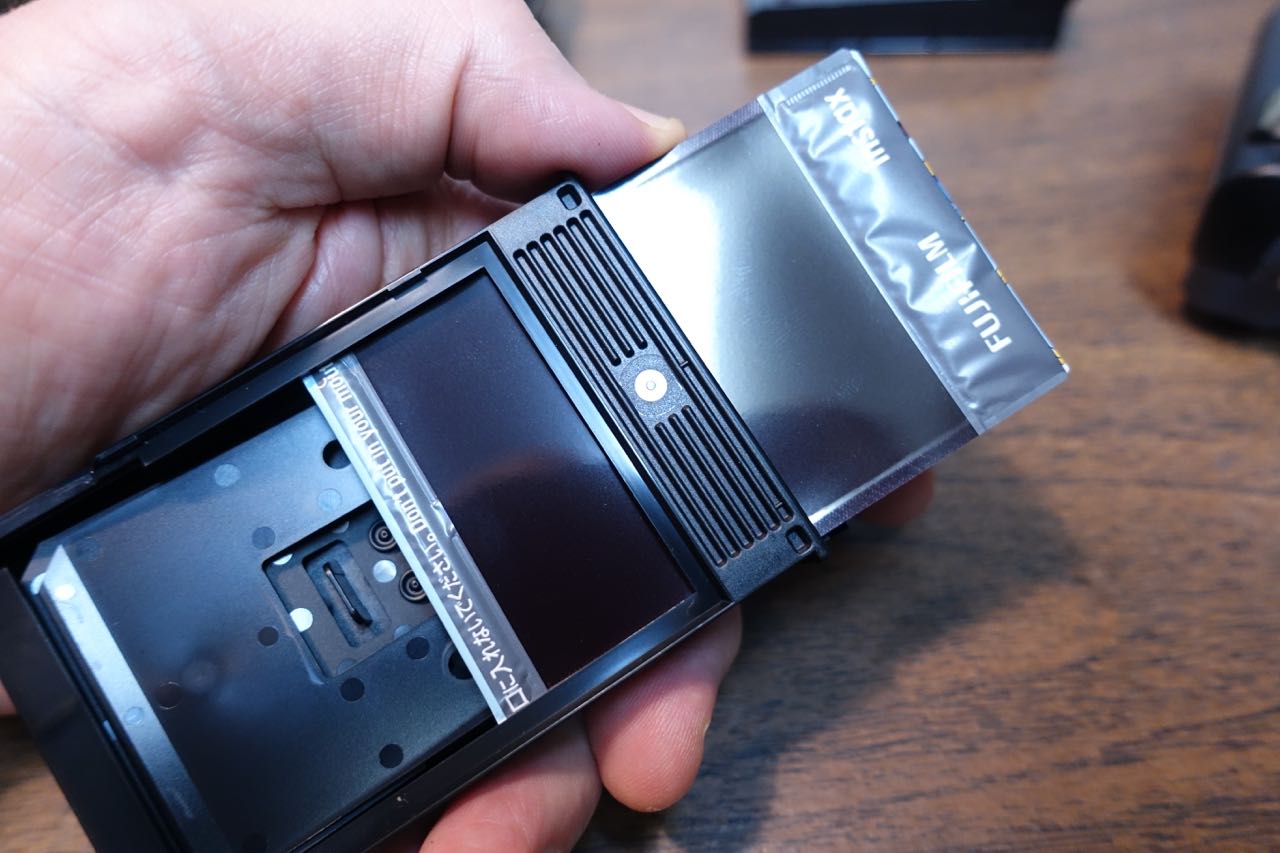
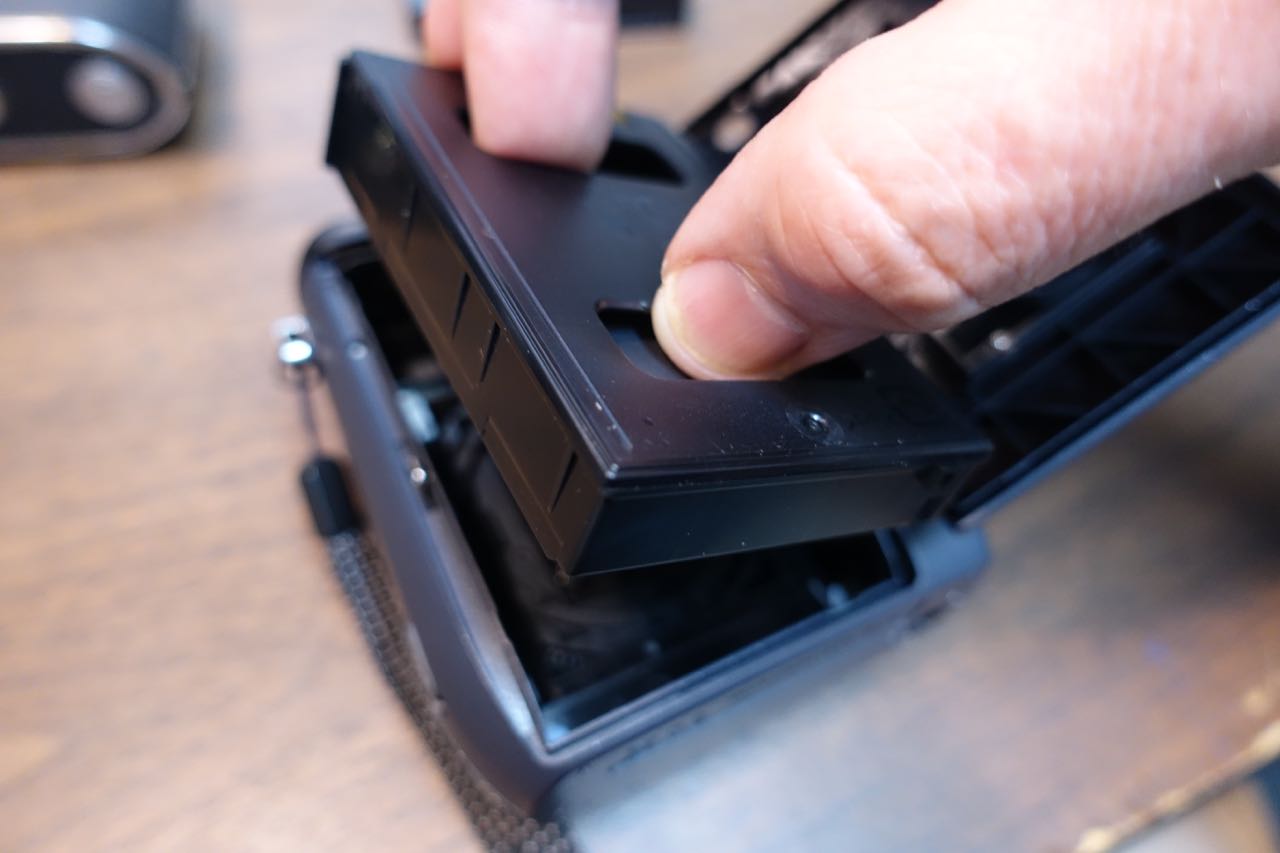
I pulled the Instax mini out of the changing bag, and covering the lens with my hand, pressed the shutter button. Buzz, whirr, and the film popped out. A minute or so later, I had an image…and it was pretty good!
Now, there are few downsides to this – since the Instax film may not be on the exact plane that the 120 film is on in the Rolfix, focus is off; small apertures may help, and with more experimentation I hope to find a consistent adjustment that would work. You can only shoot one image at a time before you have to go back to the changing bag. And you have to wonder if the Instax camera itself would do just as good a job.
But the exposure looked okay, and the process of shooting a 70-plus year old camera with instant film was, if nothing else, a fun experience.
I encourage you to give this a try it you have a chance. Note that this process won’t work in a standard 6×6 camera (like my yashicamat) since the film doesn’t fit properly. But for old 6×7 or 6×9 folding cameras, this process can breath some new life – and creative possibilities – into them.
This gallery shows the images with their borders. Note that this is “NYC” themed Instax from 2018; when I first bought the Instax Mini 70 from B&H, it included two packs of NYC-themed film. Although I’m only about 80 miles from the city, I haven’t been in in years, so these shots are from my Pennsylvania town and backyard…
